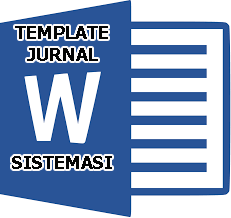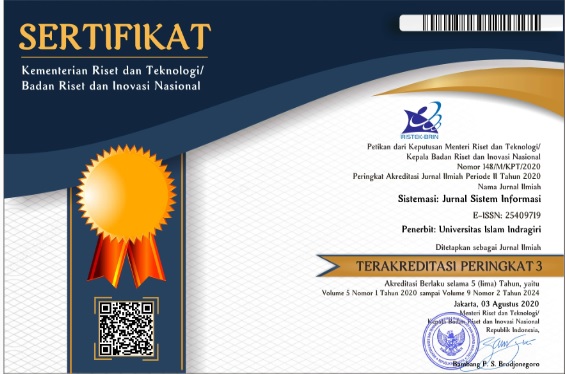Bridge Scorekeeping Automation: An iOS Application to Improve Tournament Scoring Accuracy and Efficiency
Abstract
Keywords
Full Text:
PDFReferences
R. Maximillian and D. Silvya Sari, “Diplomasi Olahraga Gabungan Bridge Seluruh Indonesia (Gabsi) melalui World Bridge Federation (WBF),” Padjadjaran Journal of International Relations, vol. 6, no. 1, pp. 47–59, 2024, doi: 10.24198/padjirv6i1.44282.
J. Rong, T. Qin, and B. An, “Competitive Bridge Bidding with Deep Neural Networks,” 2019. [Online]. Available: https://en.wikipedia.org/wiki/Standard_American
M. Bavin et al., “World Bridge Federation an International Sports Federation (IF) Recognized by the International Olympic Committee the Laws of Duplicate Bridge 2017 the members of the WBF Laws Committee were,” 2024.
“Pedoman POMNas XVIII Tahun 2023 Kalimantan Selatan,” 2023.
“Bridgemate - Wireless Scoring System.” Accessed: Feb. 14, 2025. [Online]. Available: https://www.bridgemate.com/
Sollaimansyah, “Anggaran untuk 26 Cabor telah disalurkan,” Koran Kaltara. Accessed: Feb. 14, 2025. [Online]. Available: https://kaltara.bpk.go.id/anggaran-untuk-26-cabor-telah-disalurkan/
A. G. Hahn et al., “Development of an Automated Scoring System for Amateur Boxing,” in Procedia Engineering, Elsevier Ltd, 2010, pp. 3095–3101. doi: 10.1016/j.proeng.2010.04.117.
C. Xu, Y. Fu, B. Zhang, Z. Chen, Y. G. Jiang, and X. Xue, “Learning to Score Figure Skating Sport Videos,” IEEE Transactions on Circuits and Systems for Video Technology, vol. 30, no. 12, pp. 4578–4590, Dec. 2020, doi: 10.1109/TCSVT.2019.2927118.
E. Quinn and N. Corcoran, “The Automation of Computer Vision Applications for Real-Time Combat Sports Video Analysis,” 2022.
G. Wölflein and O. Arandjelović, “Determining Chess Game State from an Image,” J Imaging, vol. 7, no. 6, Jun. 2021, doi: 10.3390/jimaging7060094.
Y. Tian, Q. Gong, and T. Jiang, “Joint Policy Search for Multi-Agent Collaboration with Imperfect Information,” Aug. 2020, [Online]. Available: http://arxiv.org/abs/2008.06495
S. Edelkamp, “ELO System for Skat and Other Games of Chance,” Apr. 2021, [Online]. Available: http://arxiv.org/abs/2104.05422
N. Sangwan, R. Rathee, and P. Chahal, “The Technological Revolution in Sport and Exercise Science: Impacts on Performance,” Sports Science & Health Advances, vol. 1, no. 2, pp. 104–111, Dec. 2023, doi: 10.60081/ssha.1.2.2023.104-111.
T. Yunhao, “The Value and Implementation Path of Smart Media Technology Application in the Cultural Heritage of Ethnic Traditional Sports,” Environment and Social Psychology, vol. 9, no. 6, 2024, doi: 10.54517/esp.v9i6.2498.
S. Perna and M. Philip Recke, “Challenge Based Learning. A Comprehensive Survey of the Literature,” 2023. [Online]. Available: https://www.challengeinstitute.org/CBL_Literature_Survey.pdf
M. Ward, “What Does CBL, ESD and SAP Spell? Actively Engaged Students Who Learn. (The Benefits of using a Challenge Based Learning (CBL), an Education for Sustainable Development (ESD) and a Student As Partners (SAP) Approach in Education),” Ubiquity Proceedings, Oct. 2023, doi: 10.5334/uproc.113.
G. Ambrosi, “Implementing CBL for University Teachers. Part A-The CBL Landscape,” 2023. [Online]. Available: https://www.researchgate.net/publication/369465554
R. Taconis and T. Bekker, “Challenge Based Learning as Authentic Learning Environment for STEM Identity Construction,” Front Educ (Lausanne), vol. 8, 2023, doi: 10.3389/feduc.2023.1144702.
K. Dikilitaş, T. Marshall, and M. Shahverdi, “CBL Framework Today and CBL Learning Outcomes,” in A Practical Guide to Understanding and Implementing Challenge-Based Learning, Cham: Springer Nature Switzerland, 2025, pp. 27–53. doi: 10.1007/978-3-031-67011-4_2.
Sam’ani and M. Qamaruzzaman, “Rancang Bangun Visualisasi Pembelajaran berbasis Android untuk Anak,” SISTEMASI : Jurnal Sistem Informasi, vol. 8, 2019, doi: https://doi.org/10.32520/stmsi.v8i3.518.
DOI: https://doi.org/10.32520/stmsi.v14i3.5136
Article Metrics
Abstract view : 434 timesPDF - 53 times
Refbacks
- There are currently no refbacks.

This work is licensed under a Creative Commons Attribution-ShareAlike 4.0 International License.









